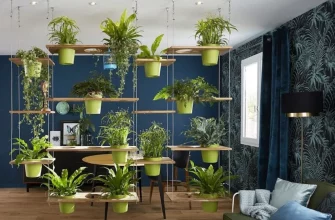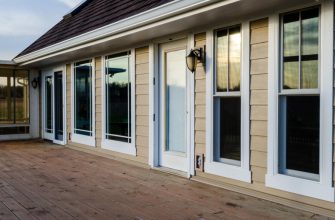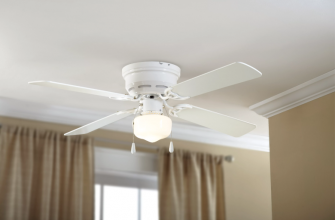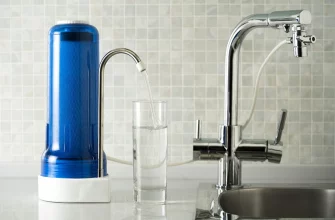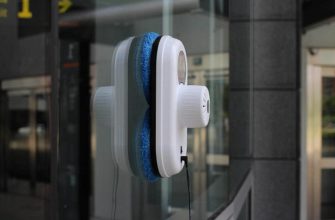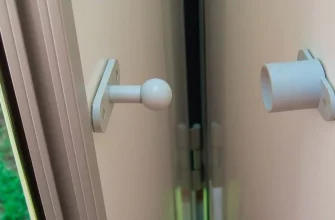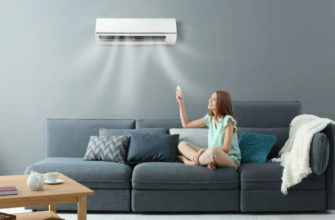Wall coverings can make a dramatic difference in transforming the look and feel of a mobile home. Whether you’re looking to give your space a fresh, updated style or cover up imperfections and damage on the walls, there are many options to consider.
In this comprehensive guide, we’ll explore the significance of using wall coverings in mobile homes and outline the key benefits. We’ll also provide tips on preparing your walls properly before installation, including assessing for any surface issues. When it comes to choosing materials, we’ll go over popular options to consider and important factors like durability and maintenance.
You’ll learn step-by-step how to measure, cut, and mount various wall covering materials. We’ll also discuss ways to customize with textures, patterns, and custom printing services. Maintaining your new wall coverings properly over time is key, so we’ll share cleaning tips and repair techniques for common problems like tears and peeling.
We’ll wrap up by looking at alternative non-permanent wall coverings, removable/reusable choices, and eco-friendly options worth considering. Our goal is to equip you with everything you need to successfully transform the look of your mobile home with wall coverings.
- The Significance of Wall Coverings in Transforming Mobile Homes
- Benefits of Using Wall Coverings
- Preparing for Wall Coverings
- Assessing the Surface for Application
- Checking for Surface Imperfections
- Preparing the Surface for Installation
- Choosing the Right Wall Covering Material
- Exploring Different Material Options
- Understanding Durability and Maintenance Considerations
- Applying Wall Coverings
- Tools and Materials Needed for Installation
- Step-by-Step Application Process
- Measuring and Cutting the Wall Covering Material
- Applying Adhesive or Mounting Hardware
- Smoothing and Securing the Wall Covering
- Customizing Wall Coverings
- Personalizing and Tailoring the Design
- Incorporating Textures and Patterns
- Utilizing Custom Printing Services
- Maintaining and Repairing Wall Coverings
- Cleaning and Maintenance Tips
- Preserving the Appearance of Wall Coverings
- Addressing Common Wear and Tear
- Repairing Damaged Wall Coverings
- Identifying and Fixing Tears, Stains, or Peeling
- Alternative Wall Covering Options
- Exploring Non-Permanent Wall Coverings
- Considering Removable and Reusable Options
- Investigating Eco-Friendly Wall Covering Choices
- Final Thoughts on Wall Covering Options for Mobile Homes
The Significance of Wall Coverings in Transforming Mobile Homes
Wall coverings can make a big impact when updating or customizing a mobile home. Since mobile homes typically come with basic, neutral walls, adding wall coverings allows you to infuse color, texture, and personality into the space.
They provide an affordable and non-permanent way to update the aesthetic of any room. You can use wall coverings to match your own unique style, without renovating the entire home.
Wall coverings also conceal imperfections, damage areas, or outdated wall colors and patterns effectively. This helps modernize the look of an older mobile home quickly.
Finally, wall coverings add an extra layer to walls that can help with insulation and sound dampening. This improves energy efficiency and noise control inside the home.
Benefits of Using Wall Coverings
There are many great reasons to consider using wall coverings to transform your mobile home:
- Aesthetic Change – They allow you to easily alter the entire look and feel of a room with color, texture, prints, and patterns.
- Conceal Flaws – Imperfections like cracks, holes, and outdated wallpaper are easily covered up.
- Protection – They add a protective layer to help preserve and extend the life of existing wall surfaces.
- Customization – With limitless design options, you can match any desired style from modern to rustic.
- Affordability – Wall coverings provide decorating impact at a fraction of the cost of full wall renovation or re-painting.
- Sound Dampening – Materials like fabric and textured coverings help absorb noise in the home.
- Insulation – Added layers help insulate walls for better temperature and energy efficiency.
- Easy Installation – Many types of wall coverings can be installed directly over existing surfaces quickly.
Taking advantage of these great benefits is what makes wall coverings a very popular choice for mobile home upgrades and transformations.
Preparing for Wall Coverings
Properly preparing your mobile home’s walls is an important first step before installing any new wall coverings. This helps ensure that the materials adhere correctly for the best long-lasting finish.
The key preparation steps include:
Assessing the Surface for Application
Checking for Surface Imperfections
Carefully look over walls for any cracks, holes, loose paneling or wallpaper, rough textures, grease spots, etc. Fill cracks and holes with spackle compound. Sand down any rough areas. Clean off dirt, residues, or grease thoroughly. Removing any wallpaper also requires chemical strippers or steamers for best results.
Preparing the Surface for Installation
Walls should be cleaned well and made smooth before installing coverings. Primer helps seal surfaces and improve adhesion. Additionally, apply adhesive bonding agent or sizing compound as needed so the wall covering sticks properly without peeling or bubbling.
Choosing the Right Wall Covering Material
With many wall covering options for mobile homes, it’s important to assess which types best suit your needs and preferences:
Exploring Different Material Options
Consider factors like your decorating style, problem areas needing concealment, budget, ease of installation, and maintenance requirements. Popular mobile home wall covering choices include:
- Wallpapers – Printed paper materials offering endless pattern and color options from bold designs to nature themes.
- Fabrics – Provide a soft, textured look and help absorb sound. Options range from canvas to woven fabrics.
- Faux Finishes – Create unique visual textures like stone, distressed paint, metallic sheen with multi-layered plasters and glazes.
- Wood Paneling – Warm, natural style good for rustic looks. Can be stained in many shades.
- PVC/Vinyl – Waterproof and extra durable, vinyl stands up well in moisture-prone rooms.
- Textured Wall Panels – Embossed rigid panels that snap together over walls with 3D visuals and shapes.
Understanding Durability and Maintenance Considerations
Factor in durability for high traffic areas, especially if you have kids or pets. Also, consider application surface, ease of cleaning, stain resistance, and recommended replacement timeframe. Consult manufacturer guidelines to make the most informed choice.
Applying Wall Coverings
Once you’ve prepped your mobile home’s walls and selected the ideal wall covering materials to use, it’s time to focus on proper installation. Follow these key guidelines for getting it right the first time:
Tools and Materials Needed for Installation
Having the right tools on hand makes measuring, cutting, and mounting wall coverings much simpler. Essentials to gather include:
- Tape measure.
- Pencil.
- Level.
- Utility knife.
- Straight edge.
- Wallpaper smoother.
- Adhesive or wall covering backing.
- Primer.
- Caulking gun.
Don’t forget drop cloths, cleaning supplies for messes, and a step stool or ladder.
Step-by-Step Application Process
Applying wall coverings properly comes down to accurate measuring, precision cutting, and securely mounting each piece:
Measuring and Cutting the Wall Covering Material
Carefully measure the length and height of each wall, accounting for windows, outlets, etc. Transfer measurements to the back of your material, mark with pencil, then use a straightedge and sharp utility knife to cut. Allow for 2-3 extra inches on top and bottom for fitting.
Applying Adhesive or Mounting Hardware
Apply wall covering adhesive, double-sided tape strips, nails, or fasteners evenly across the entire back surface as directed per material type. Provide ample drying time for adhesives before mounting if needed.
Smoothing and Securing the Wall Covering
Working from top to bottom, smooth material against the wall using a wallpaper brush or plastic smoother to remove bubbles or creases. Use a damp sponge for stubborn areas. Secure top and bottom edges neatly for best finish.
Customizing Wall Coverings
An excellent advantage of wall coverings is how easily they allow you to infuse personality and customize to your taste. There are endless possibilities for creating one-of-a-kind style:
Personalizing and Tailoring the Design
Look for materials offering made-to-order services for everything from customized prints, patterns, and color schemes to inserting photos, names, quotes, and more. This allows you to design wall coverings to match your mobile home’s existing features and decor.
Incorporating Textures and Patterns
Mix and match glossy, matte, or tactile textures and surfaces for visual interest. Play with bold, graphic prints or subtle tone-on-tone patterns depending on the mood you want to achieve.
Utilizing Custom Printing Services
Many wall covering manufacturers now offer digital printing services right on premises. This makes testing out different color schemes or imagery faster than ever. You simply submit your custom design online and they’ll print it out on your choice of materials.
Maintaining and Repairing Wall Coverings
While wall coverings should continue looking great for years after initial installation, proper maintenance and repair when needed are key to preserving their appearance over the long run.
Cleaning and Maintenance Tips
Regular light cleaning helps keep wall coverings looking like new:
Preserving the Appearance of Wall Coverings
Gently wipe down vinyl, paneling, or painted surfaces with a microfiber cloth and mild cleaner weekly. Vacuum fabric wall coverings as needed. Use a professional wall covering cleaner every few months for a deeper clean.
Addressing Common Wear and Tear
Inspect for early signs of damage like peeling edges, nail pops, stains, or tears. Fix these right away to prevent bigger issues. Touch up wallpaper seam gaps with adhesive. Replace individual panels that get damaged over time.
Repairing Damaged Wall Coverings
While preventative cleaning maintenance comes first, accidents and normal wear still happen. Know how to fix common issues:
Identifying and Fixing Tears, Stains, or Peeling
Carefully lift back loose edges or sections and re-adhere with fresh wall covering adhesive. Patch small vinyl tears with touch-up kits. Lightly sand then re-paint damaged paneling areas. Small wallpaper tears or stains can be covered up with coordinated scrap pieces and adhesive.
Alternative Wall Covering Options
Looking to switch up your mobile home’s style in the future? Check out these alternative wall covering ideas:
Exploring Non-Permanent Wall Coverings
Peel-and-stick wallpaper, reusable fabric panels, or magnetic wall coverings allow you to update looks without permanent commitment. These are great for rentals or if you anticipate redecorating down the road.
Considering Removable and Reusable Options
Temporary wall decals, chalkboard paint, or cork boards offer customizable and movable options. Swap out decals for holidays or seasons. Re-arrange cork boards to curate photos and memories.
Investigating Eco-Friendly Wall Covering Choices
Natural fiber woven wallpapers, renewable bamboo panels, and zero-VOC paint options make excellent green upgrades. They look stylish while treading lighter on the environment.
Final Thoughts on Wall Covering Options for Mobile Homes
The right wall coverings can make all the difference in personalizing a mobile home to match your lifestyle and taste. With endless colors, prints, textures, and materials to consider, you’re sure to find the perfect affordable solutions to transform ordinary walls into an extraordinary reflection of you.
Follow our preparation tips, installation guidelines, and maintenance advice to ensure your new wall coverings stand the test of time. Don’t be afraid to get creative with custom prints and patterns or removable options you can easily switch out down the road.
We hope our comprehensive guide gave you plenty of inspiration and ideas for your mobile home wall covering project. Remember to have fun with the process!


